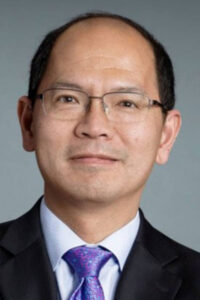Panelists describe combination approaches to overcome drug resistance
//
Estimated Read Time:
During the American Association for Cancer Research Annual Meeting 2021 session Developing Rational Combinations of Targeted Drugs and companion panel discussion, speakers described ongoing work toward the next wave of precision therapeutics in which researchers are exploring coinhibition strategies to potentially thwart common resistance pathways.
A recording of the session and the panel discussion will be available to registered attendees until June 21.
Allosteric EGFR and TEAD inhibitors: New approaches to combinatorial therapy for NSCLC

Nathanael S. Gray, PhD, Dana-Farber Cancer Institute, discussed new and emerging developments in the ongoing challenge to develop potent and selective kinase inhibitors for the treatment of cancer.
While the kinome has been extremely productive for the development of new oncology drugs, Gray said, two major challenges plague the development of kinase inhibitors.
“From all the tumor sequencing studies that have been done, we’ve pretty much mined out most of the tumors that will respond to a highly selective single agent kinase inhibitor, so the lack of generality is one big challenge for the field,” he said. “The second big challenge is related to drug resistance. Even when we get very good responses to a targeted inhibitor, patients will eventually become resistant to these agents through a variety of mechanisms.”
Gray described the development of a new class of allosteric EGFR inhibitors that can be used in combination with conventional ATP site-directed inhibitors to treat non-small cell lung cancer (NSCLC) as well as the development of covalent TEAD inhibitors that prevent activation of the YAP transcription factor.
“For both BCR-ABL and for EGFR, we’ve been able to discover a second binding pocket that allows you to keep the kinase inhibitor restrained by simultaneously binding to kinase in two spots, which is clearly going to be better than one spot,” he said. “We’ve also shown how transcriptional adaptation, either through targeting tankyrase or TEADs, can prevent the outgrowth of resistant cells and prevent the number of drug-tolerant persisters. This might be a way to either delay or prevent the emergence of stable resistant clones where additional mutations are incurred to the kinase domain.”
Novel combination therapeutic strategies for small-cell lung cancer

Kwok-Kin Wong, MD, PhD, New York University Langone Medical Center, described the development of the next generation CDK7 inhibitor YKL-5-124 and its application to small-cell lung cancer (SCLC) as a single agent and in combination with chemotherapy and immune checkpoint inhibitors.
“The combination of chemotherapy plus YKL plus anti-PD-1 have dramatic activity, although anti-PD-1 plus YKL also produce pretty dramatic activity by itself,” Wong said. “In addition, we used the RPP orthotopic model and basically showed anti-PD-1 plus YKL also have striking activity together as a combination.”
Combining YKL-5-124 with anti-PD-1 also showed significant survival benefit in multiple murine models, he said.
“It’s actually inhibiting the activity of CDK1 and CDK2, thus inhibiting cell cycle progression, which causes replication stress, an increased inflammatory response, chemokine and cytokine secretion which recruits immune cells to engage on these cancer cells,” he said.
In mouse models, Wong reported that YKL-5-124 is well tolerated and dramatically inhibits SCLC growth.
“And it actually combines quite well with anti-PD-1 immunotherapy, plus or minus chemotherapy,” he said. “Thus, we can show that combination of CDK7 inhibition with anti-PD-1, or in combination with chemotherapy, have striking synergy and should be considered in human clinical trials.”
Discovering rational combinations of molecular therapeutics to exploit cancer vulnerabilities and overcome drug resistance

Paul Workman, PhD, Institute of Cancer Research, discussed work on drug combinations and polypharmacology, including findings from recent studies looking at the interaction between BCL-2 inhibitors and combinations of PI3K and MEK inhibitors .
“The synergistic interaction between MEK and PI3 kinase inhibitors is striking; however, resistance develops very rapidly through MEK mutation,” Workman said.
That resistance can be overcome, he said, by using a combination of ERK and PI3 kinase inhibitor, but resistance then develops to that combination through ERK mutation.
“However, we find that introducing a third agent, which is a BCL-2 inhibitor, gives a synergistic interaction with both agents and synergy is obtained in cells that have become resistant to the MEK and PI3K inhibitor combination,” he said. “We think that has clinical potential.”
Workman also described the kinase polypharmacology landscape of clinical PARP inhibitors and kinase polypharmacology in HSP90 drug discovery, including the possibility and potential of “designed-in polypharmacology.”
“There is potential perhaps of designing polypharmacology, or dual pharmacology, inhibitors to give you a combinatorial effect within the same molecule,” he said. “Neither of these at the moment have direct clinical potential, but it is illustrating the approach one could take to have a compound that hits in a desired way more than one target to overcome resistance and give a combinatorial effect.”


